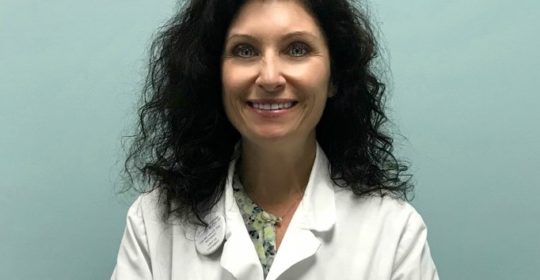Who should get yearly skin exams, why you need them, and what to expect
You use sunscreen whenever you’re outside. You stay out of the sun during peak hours. You have perfect sun “hygiene,” so do you really need to see a dermatologist for a yearly skin exam? The answer is probably yes.
Why should you get a skin exam with a dermatologist?
Dermatologist Dr. Tracie C. Bryson recommends that adults, even those with no family history of skin cancer, should start having yearly screenings at age 40. She notes, “Your primary care provider can do a skin exam, but because a yearly primary care visit needs to cover overall health, the visit may not provide adequate time for a complete skin exam.” In particular, she adds, “if you have risk factors such as fair skin, freckling, unusual moles, a history of sunburns or extensive tanning, or a history of skin cancer, then the exam should be done at a dermatology office, and you may need to start your exams at an earlier age.”
A skin screening at a dermatology office like Davie Dermatology and The Med Spa provides time for a close inspection of moles and potential problem areas, as well as discussions about healthy skin habits and lifestyle choices. Dr. Bryson cautions that skin cancer is on the rise: “Every hour of every day, one American dies of melanoma: a deadly form of skin cancer. In dermatology office visits, we can find hard-to-spot melanomas, as well as less aggressive types of skin cancer like basal cell and squamous cell carcinoma.”
Dermatologists often find skin cancers earlier, when they smaller, than when patients wait until they notice something unusual. Dr. Bryson notes, “the smaller a skin cancer is when it is found, the easier it will be to get rid of it, which often means smaller scars. In fact, if we find the cancer early enough, we may be able to avoid surgery altogether.” In addition, dermatologists can prevent some cases of skin cancer by identifying pre-cancers called actinic keratoses and treating them before they become full blown skin cancer.
What should you expect at a skin exam with a dermatologist?
During a skin exam, your dermatologist will do a full body check: not just the areas that have been exposed to the sun, like arms, legs, and face, but also the scalp, lymphatic areas, and others. Melanoma can occur on unexposed areas of skin, so it is crucial for the dermatologist to check every inch of skin.
During the exam, the dermatologist will note any potential problem areas and may request a biopsy of any suspicious spots. A skin biopsy is a simple procedure that involves scraping some cells of the spot and testing them for signs of cancer. This is done in-office and requires only a little numbing. Results will be available within 7 to 10 days, at which point you will be contacted to discuss any recommended additional treatment.
Getting a full-body skin exam might not sound like the best way to spend a half an hour, but it’s a half-hour that may save your life.


